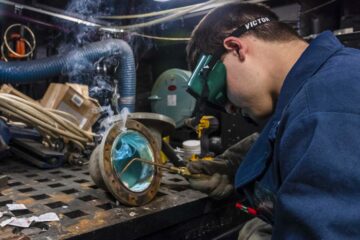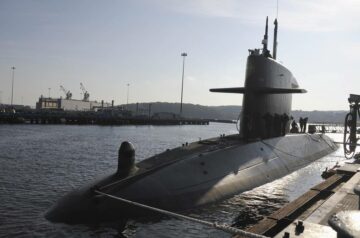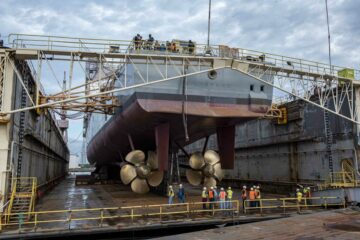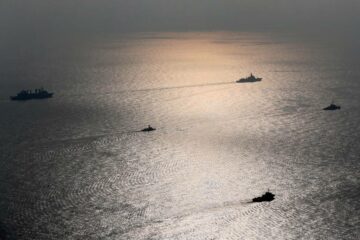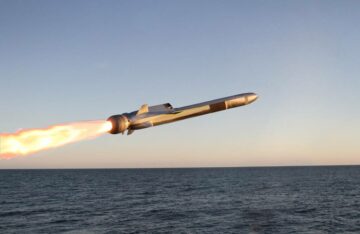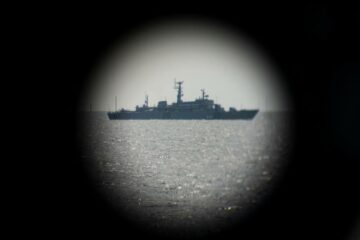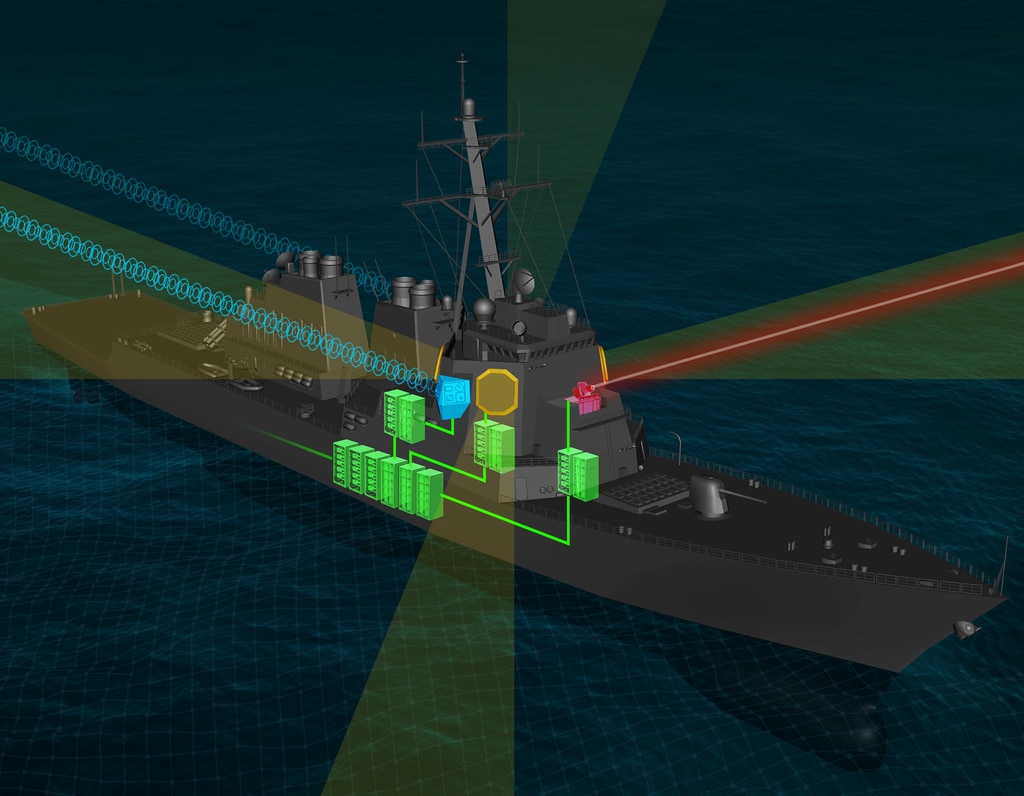
WASHINGTON — The U.S. Navy’s next-generation destroyer is slated to provide more space and power for new weapons that today’s Arleigh Burke destroyers cannot accommodate — but the DDG(X) program continues to be delayed.
With those new weapons needed now, Northrop Grumman is pitching a way to free up space and weight on existing ships for additions like lasers and microwave weapons.
The company provides the prime power equipment for the SPY-6 radar and the SEWIP Block 3 electronic warfare system, both of which will be built into the Flight III destroyers and backfit onto Flight IIA destroyers.
Rather than build two separate prime power systems, each controlling one weapon system, Northrop Grumman has created a Multifunction Prime Power System, Bob Sacca, the director of the Power and Control Systems unit, told Defense News.
Northrop has estimated it would cut the cost of the power system by 20% on both the existing Flight IIA ships and the new Flight III ships.
For the IIA destroyers, it is expected to reduce the size and weight of the power system by 20%, while on the new Flight IIIs it would create a 50% reduction in size and weight, Sacca said.
“With that weight and size reduction, it’s going to allow the Navy to add more capabilities to their destroyers and make it more relevant for today’s environment,” he said.
The key to this Multifunction Prime Power System, according to Power and Control Systems unit chief engineer Matt Superczynski, is that the system takes incoming power and sends it as needed to the radar, the electronic warfare system, new plug-ins like a laser weapon, or a battery.
When the ship needs to use a lot of power in a short time, such as repeated laser pulses, it can pull power from the battery, too, and not affect the performance of the radar, for example.
Sacca likened it to a garden hose with a variable flow nozzle — but when the nozzle is set at a low flow, the remaining water is stored for later use instead of being lost.
Superczynski said the company tested the Multifunction Prime Power System at its own lab and at a Florida State University Center for Advanced Power Systems lab that’s certified by the Navy. The new power system consists of 90% reused technology, giving it a high tech readiness level.
Sacca said Northrop Grumman last year invested in a digital twin of the system it has already demonstrated to the Navy, and the company is now building a land-based prototype slated to be available by the end of the year.
The company originally designed the power control system with the DDG(X) program in mind, which the Navy has said will have an energy architecture that can support all the power-hungry weapons and sensors the future fight will require.
But “as we see challenges with DDG(X), and perhaps pushing out from the calendar standpoint,” as Superczynski said, the company began eyeing a nearer-term opportunity. Sacca said talks are still ongoing about the Navy’s interest in the power control system and the timing of any potential purchases and installations.
For the backfits into the Flight IIA ships, he said the ideal time to replace the two separate sets of prime power equipment would be when the radars and electronic warfare systems are ripped out and replaced with the SPY-6 and the SEWIP Block 3 during a DDG Mod 2.0 modernization program.
The first ship is being worked on now under a slightly different model — destroyer Pinckney is at NASSCO in San Diego getting the SEWIP installation, will go on a deployment, and then receive the radar in a subsequent shipyard period. In the coming years, though, ships going through DDG Mod 2.0 will have both pieces of gear replaced at the same time, making that the ideal time to install the Multifunction Prime Power System, Sacca said.
On the Flight III side, the first couple ships are already under construction. Lead ship Jack H. Lucas has already gone to sea on its first set of trials, with subsequent ships in construction and in materials procurement.
Megan Eckstein is the naval warfare reporter at Defense News. She has covered military news since 2009, with a focus on U.S. Navy and Marine Corps operations, acquisition programs and budgets. She has reported from four geographic fleets and is happiest when she’s filing stories from a ship. Megan is a University of Maryland alumna.
- SEO Powered Content & PR Distribution. Get Amplified Today.
- Platoblockchain. Web3 Metaverse Intelligence. Knowledge Amplified. Access Here.
- Source: https://www.defensenews.com/naval/2023/01/24/northrop-grumman-makes-play-to-add-power-space-on-ddgs-for-weapons/
- 1
- 11
- 70
- a
- About
- accommodate
- According
- acquisition
- additions
- advanced
- affect
- All
- already
- and
- architecture
- available
- battery
- began
- being
- Block
- Budgets
- build
- Building
- built
- Calendar
- cannot
- capabilities
- Center
- Certified
- challenges
- chief
- coming
- company
- construction
- continues
- control
- controlling
- Cost
- Couple
- covered
- create
- created
- Cut
- Defense
- Delayed
- demonstrated
- deployment
- designed
- Diego
- different
- digital
- digital twin
- Director
- during
- each
- Electronic
- energy
- engineer
- Environment
- equipment
- estimated
- example
- existing
- expected
- fight
- Filing
- First
- flight
- florida
- flow
- Focus
- Free
- from
- future
- Garden
- Gear
- geographic
- getting
- Giving
- Go
- going
- High
- HTTPS
- ideal
- image
- images
- in
- Incoming
- install
- instead
- interest
- invested
- IT
- jack
- Key
- lab
- laser
- lasers
- Last
- Last Year
- lead
- Level
- load
- Lot
- Low
- make
- MAKES
- Making
- Marine
- Maryland
- materials
- Megan
- Military
- mind
- model
- modernization
- more
- needed
- needs
- New
- news
- next-generation
- ONE
- ongoing
- Operations
- Opportunity
- originally
- own
- performance
- perhaps
- period
- pieces
- pitching
- plato
- Plato Data Intelligence
- PlatoData
- Play
- potential
- power
- Prime
- Program
- Programs
- prototype
- provide
- provides
- purchases
- Pushing
- radar
- Readiness
- receive
- reduce
- relevant
- remaining
- repeated
- replace
- replaced
- Reported
- reporter
- require
- ripped
- Said
- same
- San
- San Diego
- scenarios
- SEA
- sensors
- separate
- set
- Sets
- ships
- Short
- since
- Size
- slightly different
- Space
- State
- Still
- stored
- Stories
- subsequent
- such
- support
- system
- Systems
- takes
- Talks
- tech
- Technology
- The
- The Future
- their
- Through
- time
- timing
- to
- today’s
- too
- trials
- u.s.
- U.S. Navy
- under
- unit
- university
- University of Maryland
- use
- variety
- Water
- Weapons
- weight
- which
- while
- will
- worked
- would
- X
- year
- years
- zephyrnet

